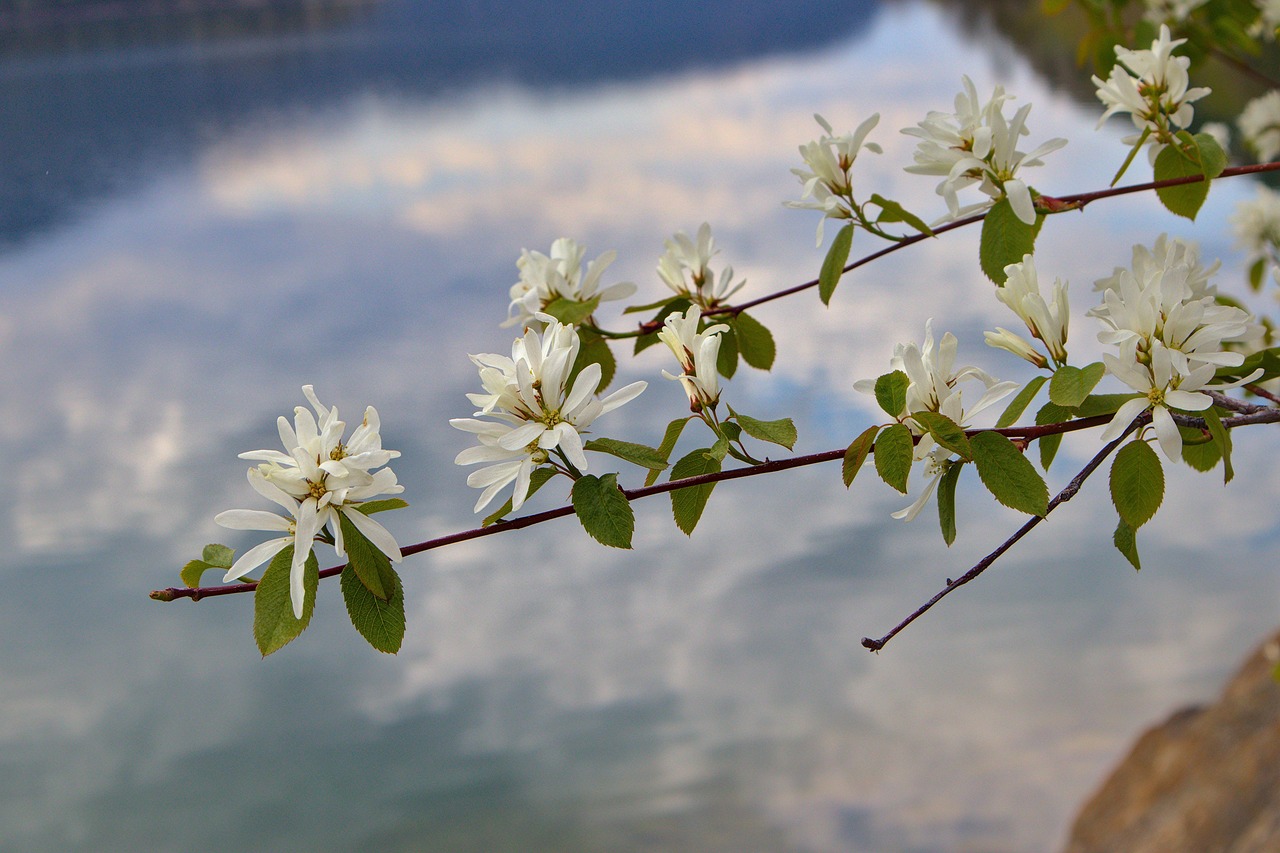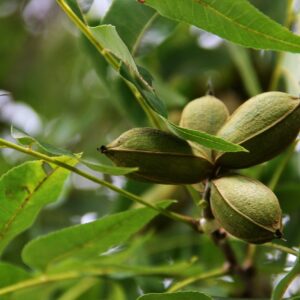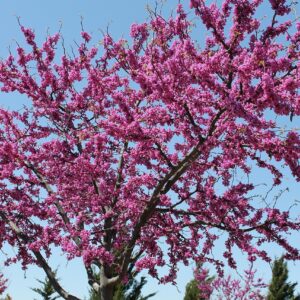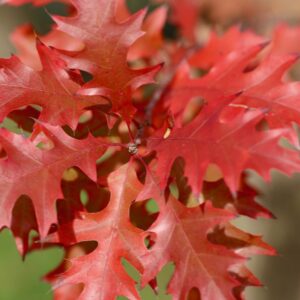The Saskatoon Serviceberry (Amelanchier alnifolia), also known as Western Serviceberry, Juneberry, or Prairie Berry, is a deciduous shrub or small tree native to North America, particularly thriving in the northern U.S. and Canada. It is well known for its hardiness, adaptability, and delicious berries that resemble blueberries in appearance and taste.
Characteristics:
Size: Typically grows 6 to 15 feet (1.8 to 4.5 meters) tall and wide, though some cultivated varieties can be smaller or larger.
Leaves: Oval-shaped, about 1 to 2 inches long, with finely serrated edges. They emerge with a bronze tint in spring, turn deep green in summer, and display brilliant yellow to orange-red colors in fall.
Flowers: Clusters of white, five-petaled flowers bloom in early spring before the leaves fully emerge, attracting pollinators like bees and butterflies.
Fruit: Small, round blue-purple berries (botanically a pome) ripen in early to mid-summer, tasting sweet with hints of almond and cherry due to their high sugar and pectin content.
Bark: Smooth when young, becoming slightly rough and grayish as it ages.
Growing Conditions:
Hardiness Zones: USDA Zones 2-7, making it very cold-hardy.
Soil Preferences: Tolerant of a range of soils, but prefers well-drained, slightly acidic to neutral soil.
Sunlight: Grows best in full sun to partial shade.
Watering: Drought-tolerant once established, though it benefits from moderate watering.
Uses & Benefits:
Edible Berries: Rich in antioxidants, fiber, and vitamin C, often used in jams, jellies, pies, and wines.
Wildlife Attraction: Berries attract birds, while flowers support bees and butterflies.
Ornamental Value: Beautiful foliage, flowers, and fall color make it an excellent landscape plant.
Erosion Control & Windbreaks: Often planted in hedgerows or shelterbelts due to its dense growth.
Planting and Maintaining Saskatoon Serviceberry
Saskatoon Serviceberry (Amelanchier alnifolia) is a resilient and low-maintenance shrub or small tree, but proper planting and care can maximize its fruit production, ornamental value, and longevity.
Planting Guide
1. Choosing the Right Location
- Sunlight: Prefers full sun (6+ hours/day) but tolerates partial shade.
- Soil: Adapts to various soil types but thrives in well-drained, loamy, or sandy soil with a slightly acidic to neutral pH (5.5-7.0).
- Spacing: Plant shrubs 4-6 feet apart if growing a hedge, or 8-10 feet apart if growing as individual trees.
2. Planting Steps
- Digging the Hole: Make a hole twice as wide and as deep as the root ball.
- Soil Preparation: If soil is poor, mix in organic compost to improve fertility.
- Planting Depth: Place the shrub so the top of the root ball is level with the soil surface.
- Backfilling & Watering: Fill the hole with soil, gently firm it down, and water deeply.
- Mulching: Apply a 2-3 inch layer of mulch (wood chips, bark, or straw) around the base to retain moisture and suppress weeds.
Watering & Maintenance
Watering First Year: Water 1-2 times per week, especially during dry spells. Mature Plants: Drought-tolerant but benefits from deep watering every 1-2 weeks during dry periods.
Pruning: Timing: Late winter or early spring before new growth. How to Prune: Remove dead, damaged, or crossing branches. Thin out older stems to encourage new growth and better berry production. Maintain an open, airy structure to improve airflow and reduce disease risk.
Fertilizing: First Year: Typically doesn’t need fertilizer if planted in good soil. Annual Feeding: Apply a balanced fertilizer (10-10-10) in early spring if growth is slow. Organic Option: A layer of compost or well-rotted manure around the base in spring can enhance soil nutrients.





